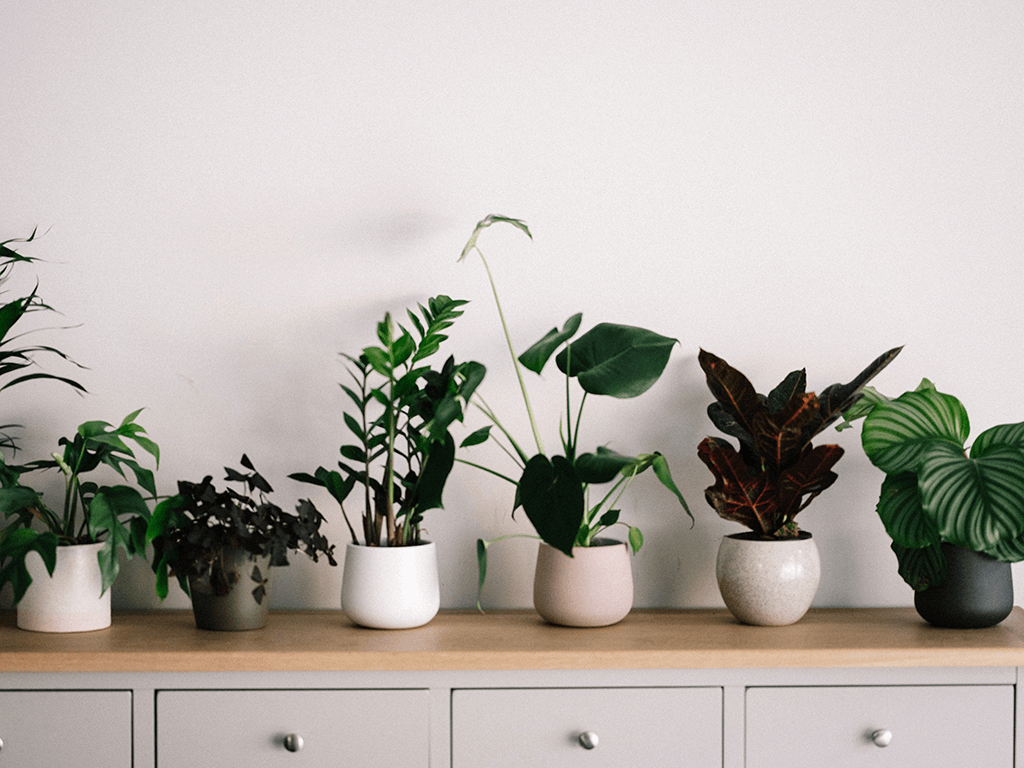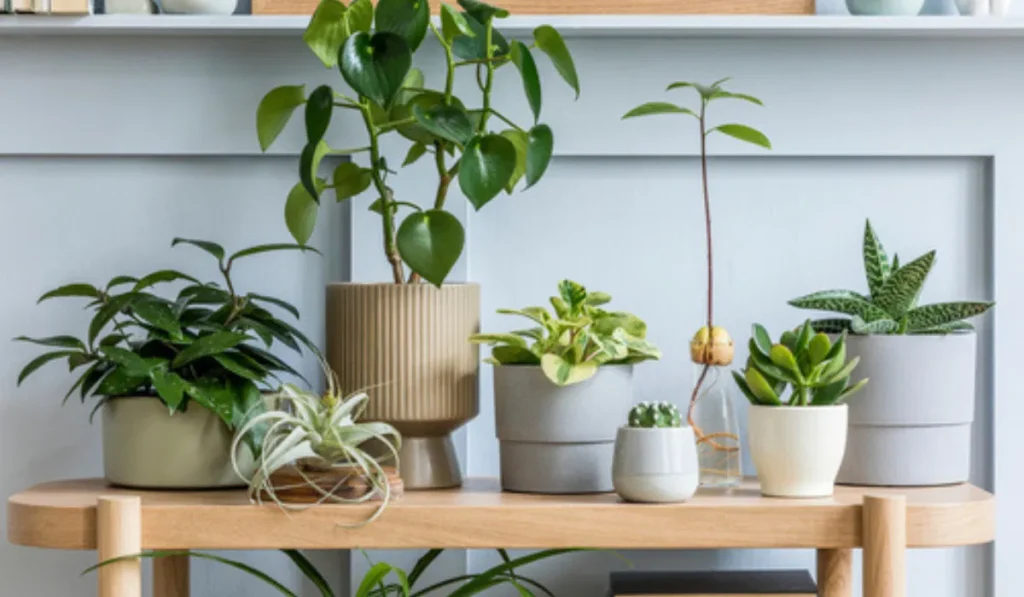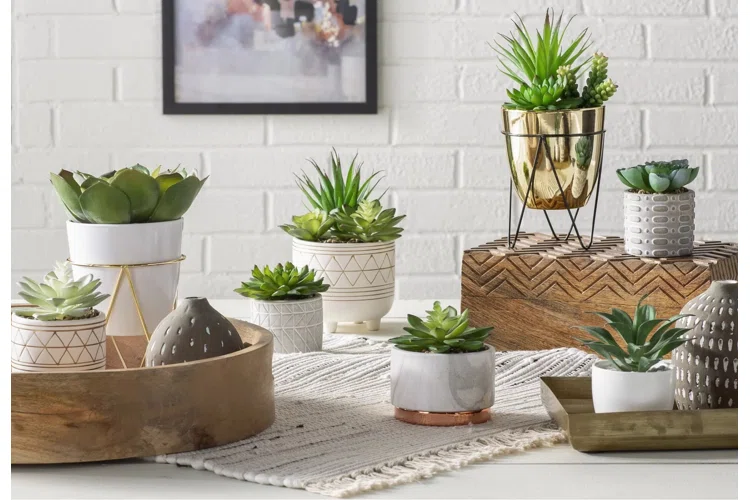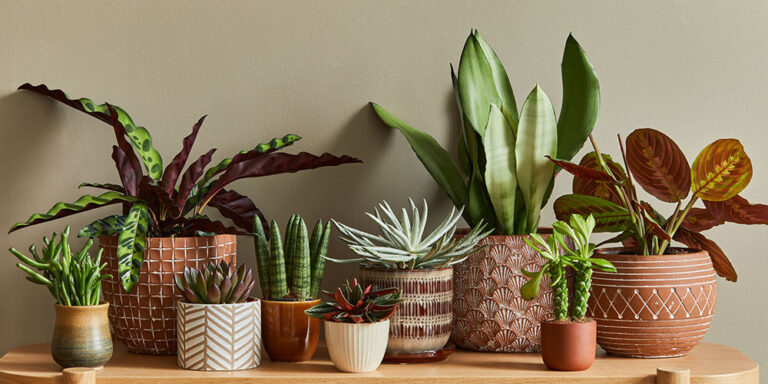Contents
Introduction
Choosing the right pot for your indoor plants might seem like a small detail, but it’s actually a big deal for the health and happiness of your green friends. Imagine trying to fit a big, comfy sofa into a tiny room – it just doesn’t work, right? The same principle applies to plants and pots. The right pot helps your plant grow strong and lush, while the wrong one can lead to problems like poor growth or root rot.
In this guide, we’ll break down everything you need to know to pick the perfect pot for your indoor plants. We’ll cover why the pot you choose matters, what different types of pots are out there, and how to match the pot to your plant’s needs. We’ll also touch on some design tips to make sure your plant pots look great with your home decor.
Whether you’re a seasoned plant enthusiast or just starting out, finding the right pot can make a huge difference. So let’s dive in and get your indoor garden looking and feeling its best!
Understand Your Plant’s Needs
When it comes to choosing the perfect pot for your indoor plants, the first step is to get to know your plant a little better. Think of it like meeting a new friend – you need to understand their preferences and habits to make sure they’re comfortable and happy. Here’s what you need to consider:

Consider the Plant’s Size and Growth Pattern
Plants come in all shapes and sizes, and they grow differently too. Some plants, like succulents, have tiny root systems that don’t need much space. Others, like monstera or peace lilies, can grow quite large and need a pot that can accommodate their expanding roots. So, before you grab a pot, check how big your plant will get and choose a pot that matches. If a plant’s pot is too small, it might become root-bound, which means the roots are cramped and can’t grow properly. On the flip side, a pot that’s too big can lead to overwatering because the excess soil retains too much moisture.
Check Light and Water Requirements
Different plants have different needs when it comes to light and water. Some love bright, indirect sunlight, while others thrive in lower light conditions. Similarly, some plants like to stay on the drier side, whereas others prefer their soil to be moist. The right pot can help manage these needs. For instance, if you have a plant that doesn’t like to sit in soggy soil, you’ll want a pot with good drainage to prevent water from pooling at the bottom.
Understanding these basic needs will help you choose a pot that supports your plant’s well-being and helps it thrive. So, take a moment to think about your plant’s habits and preferences – it’s the first step in finding a pot that’s just right!
Types of Pots and Their Materials
When picking out a pot for your indoor plants, it’s not just about the size or shape – the material of the pot matters a lot too! Each type of pot material comes with its own set of benefits and drawbacks. Here’s a rundown of the most common pot materials and what you need to know about each:

Terracotta Pots
Terracotta pots are the classic choice for many plant lovers. These pots are made from clay and are known for their natural, earthy look. They’re great because they’re breathable, which helps prevent overwatering by allowing excess moisture to evaporate. However, they can dry out quickly, so you’ll need to keep an eye on your plant’s water needs. Also, terracotta pots can be a bit heavy and may crack if they’re exposed to freezing temperatures.
Plastic Pots
Plastic pots are incredibly popular because they’re lightweight and come in just about any size and shape you can imagine. They’re also quite affordable and hold moisture better than terracotta pots, which can be great for plants that like a bit more water. On the downside, plastic pots aren’t as breathable, which can sometimes lead to root issues if they’re not used with a good potting mix.
Ceramic Pots
Ceramic pots add a touch of elegance and come in a variety of colors and designs. They’re excellent at retaining moisture, which means you won’t have to water your plants as often. However, ceramic pots are usually heavier and more expensive. Plus, if they’re not glazed, they can be prone to absorbing water, which could potentially lead to cracking if the pot dries out too quickly.
Metal Pots
Metal pots offer a sleek, modern look and are very durable. They’re great for creating a contemporary vibe in your indoor garden. However, they can heat up quickly when exposed to sunlight, which might affect your plant’s roots. Some metal pots can also rust over time, so make sure to check the quality of the metal if you’re considering this option.
Biodegradable Pots
If you’re into eco-friendly choices, biodegradable pots might be right up your alley. These pots are often made from materials like coconut coir or recycled paper and are great for starting seedlings. They break down over time, which can be good for the environment. Just keep in mind that they might not be as durable as other options and can degrade more quickly than you’d like.
Choosing the right pot material is about finding the balance between style, function, and your plant’s specific needs. So, take a look at what each type offers and think about what will work best for both you and your plant!
Size and Shape of the Pot
When it comes to picking the right pot for your indoor plants, size and shape are just as important as material. Think of it like buying a pair of shoes – you need the right fit for comfort and health. Here’s a guide to help you choose the perfect pot size and shape for your plants:

Pot Size
Choosing the right pot size is crucial for your plant’s growth. If the pot is too small, your plant’s roots can get cramped, which might stunt its growth or even cause root rot. On the other hand, a pot that’s too large can hold excess moisture, which could lead to overwatering and other issues.
So how do you find the perfect size? A good rule of thumb is to choose a pot that’s about 1 to 2 inches larger in diameter than the current pot your plant is in. This gives the roots enough room to grow without making the plant’s base too wet. If you’re re-potting, make sure the new pot isn’t drastically larger than the old one – gradual changes are better for the plant’s adjustment.
Pot Shape
The shape of the pot can also play a role in how well your plant thrives. Here’s a quick rundown of the most common shapes and their benefits:
- Standard Round Pots: These are the most common type of pot and work well for most plants. They’re simple and effective, providing even space for root growth. They’re great for plants that don’t have a specific root shape or growth pattern.
- Square or Rectangular Pots: These shapes are fantastic for saving space and are perfect for plants that spread out horizontally. They fit neatly against walls or in corners, making them ideal for small or tight spaces. Plus, they often offer more soil surface area, which can be beneficial for some plants.
- Specialized Shapes: Some plants, like orchids or bonsais, might benefit from pots designed specifically for their needs. These specialized pots can help manage specific growth habits or water requirements. For instance, orchid pots often have extra drainage holes to accommodate their unique root systems.
Choosing the right size and shape of the pot helps ensure that your plant has the space and environment it needs to thrive. It’s all about finding that perfect fit so your plant can grow healthy and strong. So, take a look at your plant’s needs and pick a pot that provides just the right amount of space and support!
Drainage and Watering Needs
When it comes to keeping your indoor plants healthy, drainage and watering are key factors that can make or break their well-being. It’s not just about how much water you give your plants, but also how well the water can leave the pot. Let’s dive into why drainage matters and how to pick a pot that helps manage your plant’s watering needs.
Importance of Drainage
Think of drainage like the escape route for excess water. Just like a clogged drain in your sink can cause problems, a pot without proper drainage can lead to root issues for your plants. Without good drainage, water can build up at the bottom of the pot, leading to soggy soil and potentially causing root rot. This is when the roots start to decay because they’re sitting in too much water, which can be detrimental to your plant’s health.
Choosing the Right Pot with Proper Drainage
To avoid these issues, look for pots that have drainage holes. These holes allow excess water to escape, preventing the soil from becoming waterlogged. Most standard pots come with built-in drainage holes, but if you’re using a decorative pot without holes, you can use a smaller, perforated pot inside it to catch excess water.
If you’re dealing with a plant that prefers more moisture, like a fern, you might still want to ensure there’s some form of drainage to prevent root problems. You can also add a layer of gravel or small stones at the bottom of the pot to help with drainage.
Using Potting Trays and Saucers
Even with pots that have drainage holes, you’ll often need a saucer or potting tray to catch any excess water that drains out. This helps protect your furniture or flooring from water damage. Saucers come in different sizes and materials, so you can easily find one that matches your pot.
Tips for Watering
Along with choosing the right pot, adjusting your watering routine is crucial. Make sure you’re aware of your plant’s specific watering needs – some plants like their soil to dry out between waterings, while others prefer consistently moist soil. Checking the soil’s moisture level before watering can help you avoid over or under-watering.
In summary, good drainage is essential for plant health, and choosing the right pot with proper drainage and using saucers can help you keep your plants happy and thriving. By understanding these basics, you’ll be better equipped to meet your plant’s watering needs and ensure they grow strong and healthy!
Aesthetic and Functional Considerations
Choosing the right pot for your indoor plants isn’t just about what’s practical – it’s also about how the pot fits into your home’s style and meets your practical needs. Let’s explore how to balance aesthetics and functionality to find a pot that looks great and works well for your plants.
Matching Pot Style with Interior Design
Your plant pots can be a stylish addition to your home decor, so it’s worth considering how they’ll blend with your existing design. Whether you’re aiming for a minimalist look, a bohemian vibe, or something more traditional, there’s a pot style that can complement your space.
- Modern and Sleek: For a contemporary look, consider pots with clean lines and neutral colors. Materials like concrete or metal can add a modern touch to your decor.
- Rustic and Cozy: Terracotta pots or those with earthy tones work well in cozy, rustic settings. They add a natural, organic feel that blends nicely with wooden furniture and natural textiles.
- Colorful and Fun: If you’re into bold colors and patterns, look for pots that make a statement. Brightly colored ceramic pots or those with unique designs can add a playful element to your indoor garden.
Practical Features
Beyond looks, there are practical features that can make a big difference in your plant care routine. Here are some functional aspects to consider:
- Handles and Wheels: If you have large pots or need to move your plants around frequently, look for pots with built-in handles or wheels. This can make shifting them much easier, especially if they’re heavy.
- Stackable Options: For those with limited space, stackable pots can be a lifesaver. They allow you to grow multiple plants without taking up too much room, making them ideal for smaller apartments or homes.
- Potting Trays and Saucers: Don’t forget about potting trays or saucers! They catch any excess water that drains out, protecting your floors and furniture. Choose ones that match or complement your pot for a cohesive look.
Balancing Form and Function
When picking a pot, it’s all about finding the right balance between how it looks and how it performs. A pot that’s stylish but doesn’t meet your plant’s needs won’t be as effective as one that combines both beauty and practicality.
By considering both aesthetic and functional aspects, you’ll be able to choose pots that not only enhance your home’s decor but also support your plants’ health and growth. So take a moment to think about what works best for your space and your plants – it’s the perfect way to create a beautiful and thriving indoor garden!
Potting Tips and Maintenance
Once you’ve picked out the perfect pot for your indoor plants, the next step is making sure you pot your plants correctly and keep everything in good shape. Proper potting and maintenance can make a big difference in your plants’ health and longevity. Here’s how to get it right:
Potting Techniques
Getting your plant into its new pot is a crucial step, so let’s make sure it’s done right:
- Choose the Right Potting Mix: Different plants have different soil needs. For most indoor plants, a general-purpose potting mix works well, but some plants might need specific mixes. For example, succulents and cacti do better with a mix designed for their needs, which usually includes extra grit for drainage.
- Prepare the Pot: Before you start, make sure your pot has proper drainage. If it doesn’t have holes, you can create some or use it as a decorative outer pot. Add a layer of small stones or gravel at the bottom of the pot to help with drainage if needed.
- Potting the Plant: Gently remove the plant from its current pot, being careful not to damage the roots. Place a bit of potting mix in the new pot, then position the plant so that the top of its root ball is level with the rim of the new pot. Fill in around the roots with more potting mix, and press it down gently to eliminate air pockets. Water the plant well after potting to help settle the soil.
Maintaining Pots
Keeping your pots and plants in good shape requires a bit of regular upkeep:
- Cleaning Pots: Regularly clean your pots to prevent the buildup of algae and bacteria. For most pots, you can use a mild soap and water solution. Avoid harsh chemicals that might damage the pot or affect your plant.
- Checking for Root Rot: Occasionally, check the plant’s roots to ensure they’re healthy. If you notice a bad smell or see black, mushy roots, it might be a sign of root rot, often caused by overwatering or poor drainage. If this happens, you may need to repot the plant into fresh soil and a pot with better drainage.
- Adjusting Watering: Pay attention to your plant’s response to watering. Adjust the frequency based on the season, as many plants need less water during the winter months when they’re not growing as actively.
Final Tips
Regular maintenance can help prevent common issues and keep your plants thriving. Make a habit of checking your plants and pots periodically to catch any potential problems early.
By following these potting and maintenance tips, you’ll help your plants grow happily and healthily in their new pots. Proper care ensures your indoor garden remains vibrant and beautiful, making your plant care routine a bit easier and more enjoyable!
Special Considerations
When it comes to indoor plant care, there are a few special considerations that can make a big difference. From how temperature affects your pots to specific needs for different types of plants, understanding these details can help you keep your indoor garden thriving. Let’s dive into what you need to know!
Temperature and Climate
The temperature and climate in your home can impact how well your plant pots perform. Here’s what to keep in mind:
- Material Sensitivity: Different pot materials react differently to temperature changes. For example, metal pots can get quite hot if they’re in direct sunlight, which might affect your plant’s roots. On the other hand, terracotta pots can become very cold if they’re near a drafty window, potentially impacting plant health. Choose pot materials that suit your home’s temperature conditions and consider placing them in spots where temperature changes are minimal.
- Seasonal Changes: During colder months, indoor temperatures can drop, affecting the moisture levels in the soil. Make sure your pots are not sitting directly on cold surfaces that could chill the roots. In summer, ensure your pots aren’t placed in spots that get too hot, as excessive heat can lead to rapid evaporation and may require more frequent watering.
Plant-Specific Potting Needs
Different plants have unique requirements, so here’s a quick guide to help you pick the right pot for some specific types:
- Succulents and Cacti: These plants thrive in well-draining soil and pots with ample drainage holes. They don’t like to sit in soggy soil, so choose pots that help keep their roots dry and healthy. A pot with a gritty mix and good drainage is ideal.
- Ferns and Tropical Plants: These plants usually enjoy more moisture and humidity. A pot that retains some moisture, like ceramic or plastic with good drainage, can be beneficial. You might also consider using a potting mix that helps retain moisture but doesn’t stay too wet.
- Orchids: Orchids often need specialized pots with extra drainage and air circulation around their roots. Look for pots designed specifically for orchids, which usually have additional holes or slits to keep the roots healthy.
By considering these special factors, you can ensure that your plants get the best possible environment for growth. Each plant has its own set of needs, and choosing the right pot helps create the perfect home for them.
In summary, paying attention to temperature and plant-specific requirements can help you choose the best pot and care routine for your indoor plants. With a bit of knowledge and the right pot, you can keep your indoor garden looking lush and healthy all year round!
Conclusion
Choosing the right pot for your indoor plants is more than just a decorative choice – it’s crucial for their health and growth. A well-chosen pot helps ensure that your plants have the space, drainage, and environment they need to thrive. Here’s a quick recap of what we’ve covered and some final tips to help you get it right:
Summary of Key Points
- Understand Your Plant’s Needs: Before picking a pot, consider your plant’s size, growth pattern, and specific requirements for light and water. This helps you choose a pot that will support its growth effectively.
- Types of Pots and Materials: Each pot material – from terracotta and plastic to ceramic and metal – has its own advantages and disadvantages. Choose a material that fits both your plant’s needs and your home’s style.
- Size and Shape: The size and shape of the pot can affect your plant’s health. Make sure the pot is appropriately sized and shaped to support your plant’s root system and growth habits.
- Drainage and Watering: Good drainage is key to preventing root rot and other water-related issues. Ensure your pot has proper drainage and consider using saucers or trays to manage excess water.
- Aesthetic and Functionality: Balance style with function by choosing pots that complement your decor while also meeting practical needs, like handles for easy movement or stackable designs for space-saving.
- Potting and Maintenance: Proper potting techniques and regular maintenance, such as cleaning pots and checking for root rot, help keep your plants healthy and happy.
- Special Considerations: Pay attention to how temperature affects different pot materials and cater to specific needs of various plant types to ensure optimal growth.
Final Tips for Successful Indoor Plant Care
- Observe and Adjust: Every plant is unique, so keep an eye on how your plant responds to its new pot. Adjust watering and care routines as needed to keep it thriving.
- Experiment and Enjoy: Don’t be afraid to experiment with different pot styles and materials. Enjoy the process of finding what works best for both your plants and your home.
By keeping these points in mind and applying the tips we’ve discussed, you’ll be well on your way to creating a thriving indoor garden. Remember, the right pot can make a huge difference in your plant’s health and your overall enjoyment of indoor gardening. Happy potting!



